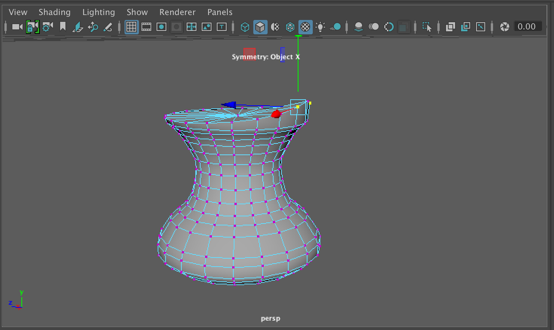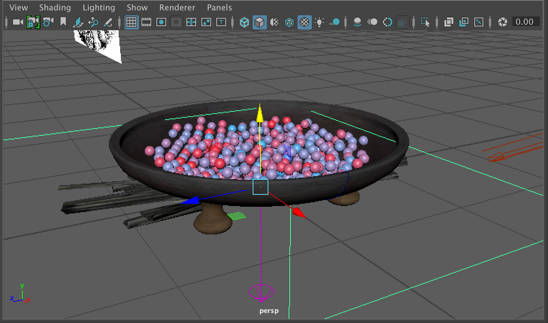MANIOC GRIDDLE
3D Models
Figures

Figure 89: Reference image for modern metal manioc roasting pan. (Image courtesy of Dr. Clark Erickson).

Figure 90: Model of manioc roasting pan created with an Extruded cube and Scaled cylinders.

Figure 91: UV Outliner of manioc roasting pan. Top texture is wood texture for the pan’s legs and bottom texture if dark ceramic texture for the rectangular pan.

Figure 92: Preview of modern metal manioc roasting pan.

Figure 93: Reference image of family cooking manioc, featuring wooden paddle, circular ceramic manioc griddle supported by firedogs, and a fire. (Drawing by Dan Brinkmeier).

Figure 94: Bezier Curve for circular ceramic manioc griddle.

Figure 95: Revolved Bezier Curve creating the shape of the manioc griddle.

Figure 96: Preview of pan portion of manioc griddle with dark ceramic Lambert texture assigned.

Figure 97: Progression of models from rough polygons to the final form of a firedog.

Figure 98: Modifying the upper surface of a firedog to create a curved surface to better match the curve of the pan portion of the griddle.

Figure 99: Using Wireframe Mode to position the firedog so it is not penetrating the griddle’s inside surface.

Figure 100: Using bottom view to position firedogs at equal distances in relation to the griddle and to each other.

Figure 101: Preview of manioc griddle with firedogs with dark brown ceramic Lambert textures assigned for firedogs.

Figure 102: Render of nParticles being poured into model of modern metal manioc roasting pan.

Figure 103: Attribute editor for nParticles created in the nParticle Emitter. Under Particle Size, I decreased the Radius to create smaller “shredded manioc” particles.

Figure 104: Top image depicts original particles emitted with a larger radius. Bottom image depicts particles emitted after decreasing the particle radius in the Attribute Editor.

Figure 105: Preview of manioc griddle filled with “shredded manioc” particles.

Figure 106: Preview of manioc griddle filled with particles and fire model underneath.